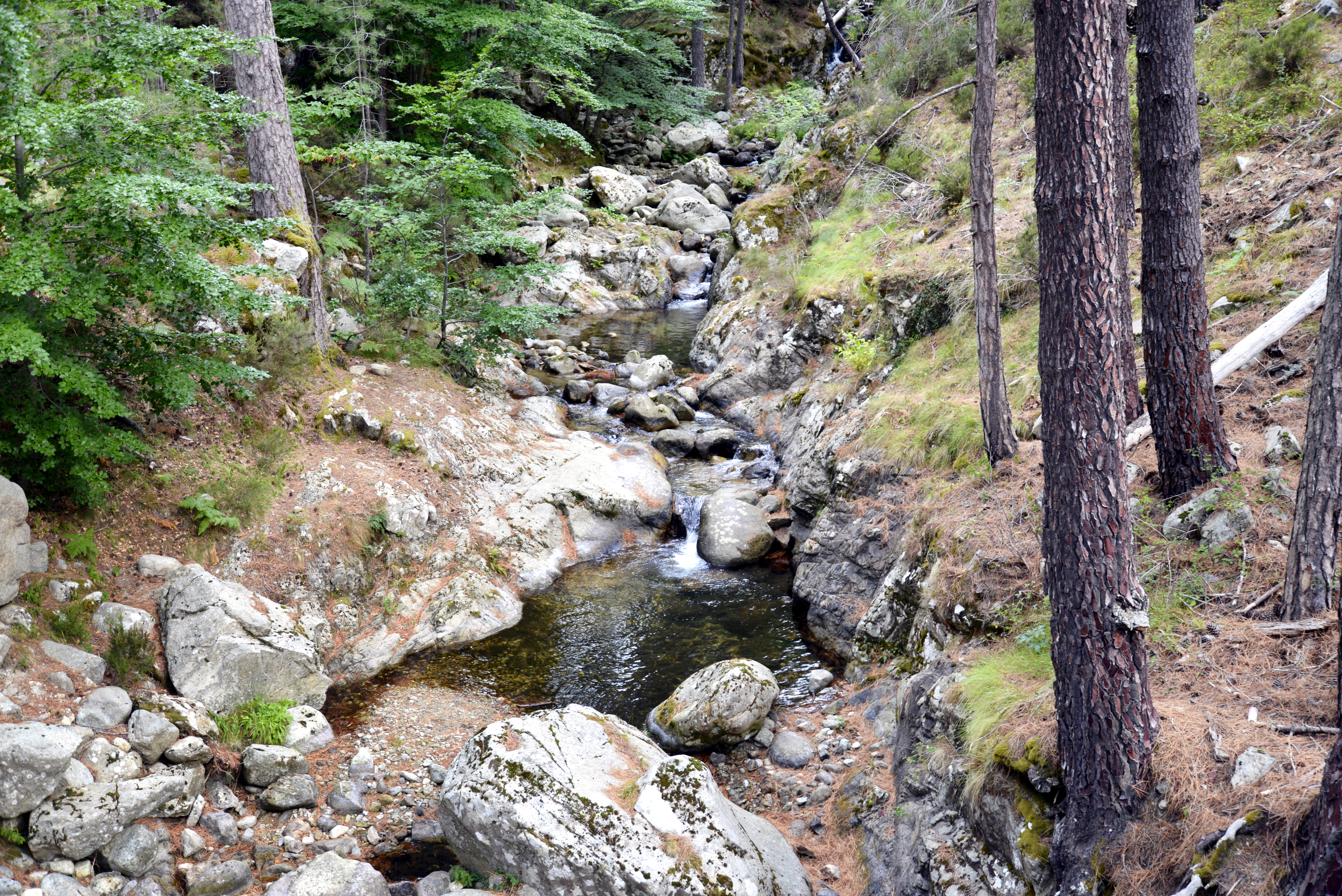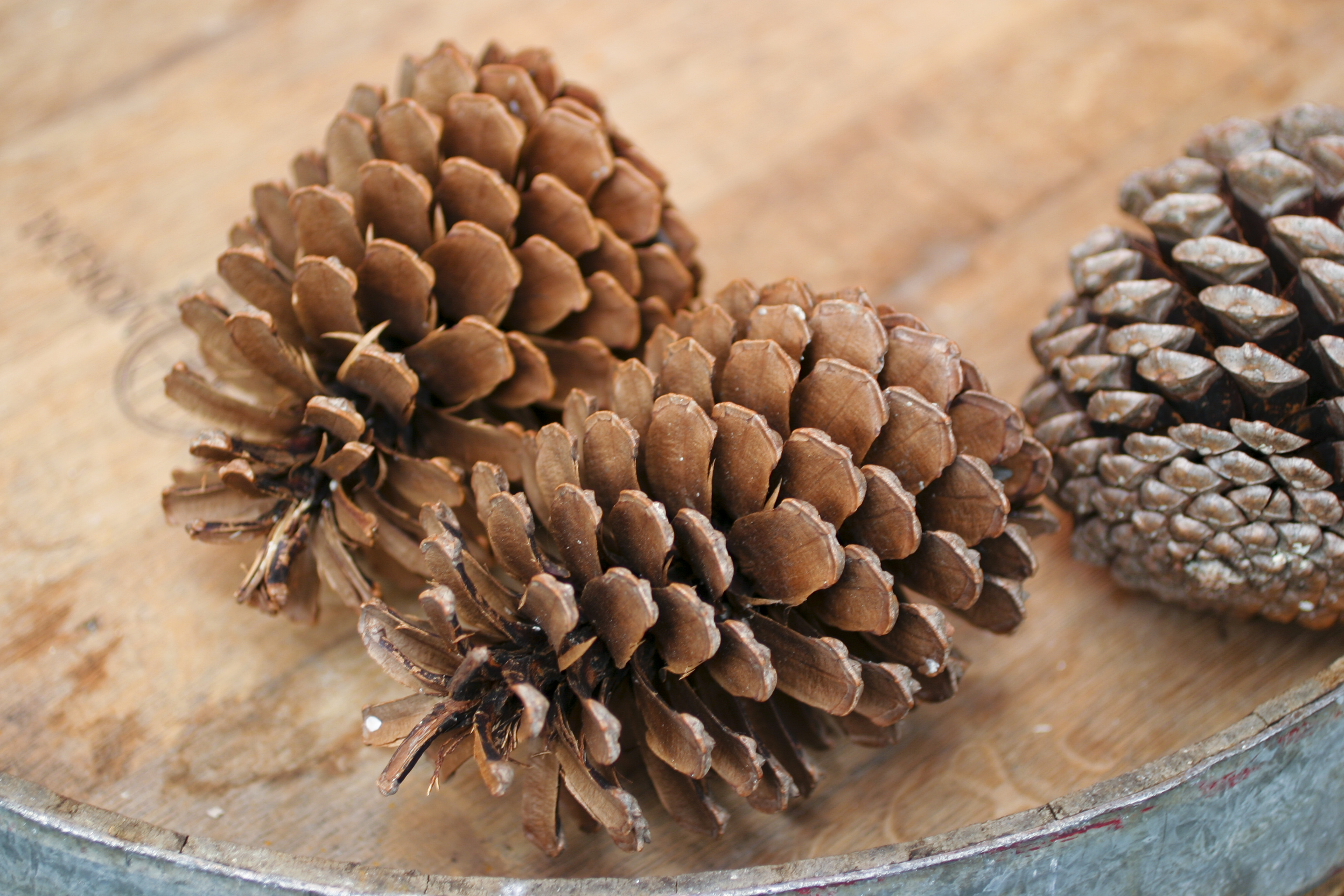|
Fium'Orbu
The Fiumorbo ( co, U Fium'Orbu) is a coastal river in the department of Haute-Corse, Corsica, France. It is dammed in two places to supply irrigation water and hydroelectricity. Between the two dams it runs through the spectacular Défilé de l’Inzecca, a Natura 2000 site. Course The Fiumorbo is long. It crosses the communes of Bastelica, Palneca, Ghisonaccia, Ghisoni, Lugo-di-Nazza, Poggio-di-Nazza, Prunelli-di-Fiumorbo and Serra-di-Fiumorbo. The Fiumorbo rises in the commune of Palneca, Corse-du-sud, to the north of the Monte Giovanni. It forms the border between Palneca and Bastelica as it flows north, then northeast, entering the commune of Ghisoni, Haute-Corse. It continues northeast and north through the Forêt de Marmano, then turns east to the hamlet of Sampolo, where it is dammed to form the Réservoir de Sampolo. Below the Barrage de Sampolo it flows east through the Défilé de l'Inzecca down to the coastal plain, where it is dammed by the Barrage de Trevadin ... [...More Info...] [...Related Items...] OR: [Wikipedia] [Google] [Baidu] |
Varagno
The Varagno (french: Ruisseau de ´Varagno) is a stream in the department of Haute-Corse, Corsica, France. It is a tributary of the Fiumorbo. Course The Varagno is long and flows through the communes of Isolaccio-di-Fiumorbo, Poggio-di-Nazza and Prunelli-di-Fiumorbo. The stream, known in its upper section as the Ruisseau d'Albarelli, rises to the east of the Punta di Taoria. It flows southeast and then east past the village of Ajola, and continues east to its junction with the Fiumorbo to the northeast of the town of Ghisonaccia. It is crossed by the D44 near Ajola and by the D244 further down, but no roads follow its course. Environment The Varagno flows through the Forêts du Fiumorbu, designated as a ''Zone naturelle d'intérêt écologique, faunistique et floristique'' (ZNIEFF). This includes the upper and middle watershed of the Abatesco and tributaries of the Fium'Orbu river such as the Saltaruccio and Varagno streams. The higher parts of the area are mainly covered wit ... [...More Info...] [...Related Items...] OR: [Wikipedia] [Google] [Baidu] |
Réservoir De Sampolo
The Sampolo Reservoir (french: Réservoir de Sampolo, co, Lavu di Sampolu) is a reservoir in the Haute-Corse department of Corsica, France. It is formed by damming the Fiumorbo (or Fium'Orbu) river by the Barrage du Sampolo. The reservoir provides hydroelectricity and water for irrigation. The gallery of the dam is home to important bat colonies. Location The Lac de Sampolo, or Réservoir de Sampolo, is formed by the Barrage du Sampolo, which dams the Fiumorbo river below the village of Sampolo. The dam and east end of the reservoir are in the commune of Lugo-di-Nazza. The remainder of the reservoir is in the commune of Ghisoni. The D344 road from Ghisonaccia to Ghisoni runs along the north shore. The dam is just above the gorge named the Défilé de l’Inzecca, a Natura 2000 site. Below the site is another dam, the Barrage de Trévadine, where the river emerges onto the coastal plain. Hydrology The dam was built between 1987 and 1991 and went into service in 1992. The con ... [...More Info...] [...Related Items...] OR: [Wikipedia] [Google] [Baidu] |
Prunelli-di-Fiumorbo
Prunelli-di-Fiumorbo ( it, Prunelli di Fiumorbo; co, I Pruneddi di Fiumorbu) is a commune in the Haute-Corse department of France on the island of Corsica. Population See also *Communes of the Haute-Corse department The following is a list of the 236 communes of the Haute-Corse department Department may refer to: * Departmentalization, division of a larger organization into parts with specific responsibility Government and military *Department (administr ... References Communes of Haute-Corse {{HauteCorse-geo-stub ... [...More Info...] [...Related Items...] OR: [Wikipedia] [Google] [Baidu] |
Saltaruccio
The Saltaruccio (french: Ruisseau de Saltaruccio) is a stream in the department of Haute-Corse, Corsica, France. It is a tributary of the Fiumorbo. Course The Saltaruccio is long and flows through the communes of Lugo-di-Nazza and Poggio-di-Nazza. It rises to the northeast of the Punta di Taoria and flows northeast and then east between the villages of Poggio-di-Nazza and Lugo-di-Nazza. The D44 linking these villages crosses the stream. It continues in a generally east-southeast direction to its confluence with the Fiumorbo to the northwest of the town of Ghisonaccia. Environment The Saltaruccio flows through the Forêts du Fiumorbu, designated as a ''Zone naturelle d'intérêt écologique, faunistique et floristique'' (ZNIEFF). This includes the upper and middle watershed of the Abatesco and tributaries of the Fium'Orbu river such as the Saltaruccio and Varagno streams. The higher parts of the area are mainly covered with beech forest (''Fagus sylvatica''), birch groves, ... [...More Info...] [...Related Items...] OR: [Wikipedia] [Google] [Baidu] |
Lac De Sampolo
The Sampolo Reservoir (french: Réservoir de Sampolo, co, Lavu di Sampolu) is a reservoir in the Haute-Corse department of Corsica, France. It is formed by damming the Fiumorbo (or Fium'Orbu) river by the Barrage du Sampolo. The reservoir provides hydroelectricity and water for irrigation. The gallery of the dam is home to important bat colonies. Location The Lac de Sampolo, or Réservoir de Sampolo, is formed by the Barrage du Sampolo, which dams the Fiumorbo river below the village of Sampolo. The dam and east end of the reservoir are in the commune of Lugo-di-Nazza. The remainder of the reservoir is in the commune of Ghisoni. The D344 road from Ghisonaccia to Ghisoni runs along the north shore. The dam is just above the gorge named the Défilé de l’Inzecca, a Natura 2000 site. Below the site is another dam, the Barrage de Trévadine, where the river emerges onto the coastal plain. Hydrology The dam was built between 1987 and 1991 and went into service in 1992. The con ... [...More Info...] [...Related Items...] OR: [Wikipedia] [Google] [Baidu] |
France
France (), officially the French Republic ( ), is a country primarily located in Western Europe. It also comprises of overseas regions and territories in the Americas and the Atlantic, Pacific and Indian Oceans. Its metropolitan area extends from the Rhine to the Atlantic Ocean and from the Mediterranean Sea to the English Channel and the North Sea; overseas territories include French Guiana in South America, Saint Pierre and Miquelon in the North Atlantic, the French West Indies, and many islands in Oceania and the Indian Ocean. Due to its several coastal territories, France has the largest exclusive economic zone in the world. France borders Belgium, Luxembourg, Germany, Switzerland, Monaco, Italy, Andorra, and Spain in continental Europe, as well as the Netherlands, Suriname, and Brazil in the Americas via its overseas territories in French Guiana and Saint Martin. Its eighteen integral regions (five of which are overseas) span a combined area of and contain clos ... [...More Info...] [...Related Items...] OR: [Wikipedia] [Google] [Baidu] |
Électricité De France
Électricité de France S.A. (literally ''Electricity of France''), commonly known as EDF, is a French multinational electric utility company, largely owned by the French state. Headquartered in Paris, with €71.2 billion in revenues in 2016, EDF operates a diverse portfolio of at least 120 gigawatts of generation capacity in Europe, South America, North America, Asia, the Middle East, and Africa. In 2009, EDF was the world's largest producer of electricity. Its 56 active nuclear reactors (in France) are spread out over 18 sites (nuclear power plants). They comprise 32 reactors of 900 MWe, 20 reactors of 1,300 MWe, and 4 reactors of 1,450 MWe, all PWRs. EDF was created on 8 April 1946 by the 1945 parliament, from the merging of various divided actors. EDF led France's post-war energy growth, with a unique focus on civil nuclear energy, through reconstruction and further industrialization within the Trente Glorieuse, being a fleuron of France's new industrial landscap ... [...More Info...] [...Related Items...] OR: [Wikipedia] [Google] [Baidu] |
Zone Naturelle D'intérêt écologique, Faunistique Et Floristique
A Zone naturelle d'intérêt écologique, faunistique et floristique (Natural zone of ecological interest, fauna and flora), abbreviated as ZNIEFF, is a type of natural environment recognized by France. The inventory of a ZNIEFF area is an inventory of natural resources and scientific program launched in 1982 by Minister of Environment Huguette Bouchardeau and confirmed by the Act of July 12, 1983 called the Bouchardeau act. A ZNIEFF is not a measure of regulatory protection, but an inventory. It corresponds to the census of outstanding natural land areas in the twenty-two metropolitan areas as well as the overseas departments of France. The designation of a ZNIEFF based primarily on the presence of species or groups of species with strong heritage interest. The presence of at least one population of critical species ( :fr:espèce déterminante in French) defines a ZNIEFF. This is one of the bases for prioritizing natural heritage issues as part of the National Biodiversity Strat ... [...More Info...] [...Related Items...] OR: [Wikipedia] [Google] [Baidu] |
Fagus Sylvatica
''Fagus sylvatica'', the European beech or common beech is a deciduous tree belonging to the beech family Fagaceae. Description ''Fagus sylvatica'' is a large tree, capable of reaching heights of up to tall and trunk diameter, though more typically tall and up to trunk diameter. A 10-year-old sapling will stand about tall. It has a typical lifespan of 150–200 years, though sometimes up to 300 years. In cultivated forest stands trees are normally harvested at 80–120 years of age. 30 years are needed to attain full maturity (as compared to 40 for Fagus grandifolia, American beech). Like most trees, its form depends on the location: in forest areas, ''F. sylvatica'' grows to over , with branches being high up on the trunk. In open locations, it will become much shorter (typically ) and more massive. The leaves are alternate, simple, and entire or with a slightly crenate margin, long and 3–7 cm broad, with 6–7 veins on each side of the leaf (as opposed to ... [...More Info...] [...Related Items...] OR: [Wikipedia] [Google] [Baidu] |
Pinus Nigra
''Pinus nigra'', the Austrian pine or black pine, is a moderately variable species of pine, occurring across Southern Europe from the Iberian Peninsula to the eastern Mediterranean, on the Anatolian peninsula of Turkey, Corsica and Cyprus, as well as Crimea and in the high mountains of Northwest Africa. Description ''Pinus nigra'' is a large coniferous evergreen tree, growing to high at maturity and spreading to wide. The bark is gray to yellow-brown, and is widely split by flaking fissures into scaly plates, becoming increasingly fissured with age. The leaves ('needles') are thinner and more flexible in western populations. The ovulate and pollen cones appear from May to June. The mature seed cones are (rarely to 11 cm) long, with rounded scales; they ripen from green to pale gray-buff or yellow-buff in September to November, about 18 months after pollination. The seeds are dark gray, long, with a yellow-buff wing long; they are wind-dispersed when the cones open from ... [...More Info...] [...Related Items...] OR: [Wikipedia] [Google] [Baidu] |
Pinus Pinaster
''Pinus pinaster'', the maritime pine or cluster pine, is a pine native to the south Atlantic Europe region and parts of the western Mediterranean. It is a hard, fast growing pine bearing small seeds with large wings. Description ''Pinus pinaster'' is a medium-size tree, reaching tall with a trunk diameter of up to , exceptionally . The bark is orange-red, thick, and deeply fissured at the base of the trunk, somewhat thinner in the upper crown. The leaves ('needles') are in pairs, very stout ( broad), up to long, and bluish-green to distinctly yellowish-green. The maritime pine features the longest and most robust needles of all European pine species. The cones are conic, long and broad at the base when closed, green at first, ripening glossy red-brown when 24 months old. They open slowly over the next few years, or after being heated by a forest fire, to release the seeds, opening to broad. The seeds are long, with a wing, and are wind- dispersed. Similar specie ... [...More Info...] [...Related Items...] OR: [Wikipedia] [Google] [Baidu] |





